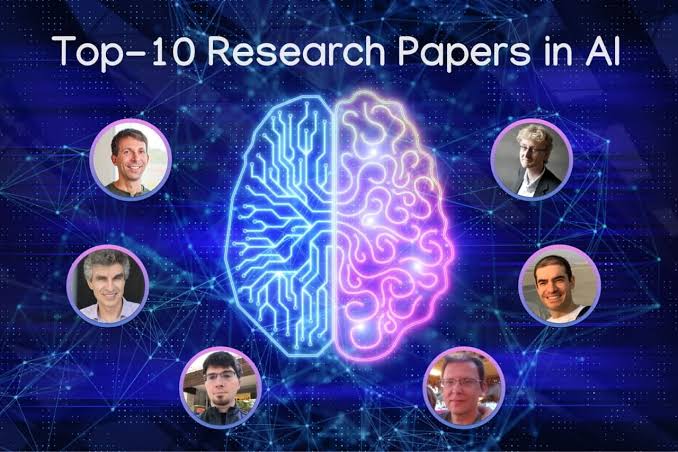Artificial intelligence (AI) has become transformative force in various fields from healthcare to finance and its impact continues to grow as research advances. Field of AI is broad, encompassing areas such as machine learning natural language processing, computer vision and robotics. Within these domains numerous research papers have made significant contributions. They influence direction of AI development and applications. Here are ten AI research papers that stand out for their impact, innovation and influence on field.
1. A Few Useful Things to Know About Machine Learning
First paper on this list is "A Few Useful Things to Know About Machine Learning" by Pedro Domingos. This paper published in 2012, is must-read for anyone entering field of machine learning. Domingos provides overview of key concepts and challenges in machine learning. He distills complex ideas into accessible insights. Paper is not just technical guide. It also offers practical advice on how to approach machine learning projects. This makes it invaluable for both beginners and experienced practitioners
2. ImageNet Classification with Deep Convolutional Neural Networks
Next is "ImageNet Classification with Deep Convolutional Neural Networks" by Alex Krizhevsky Ilya Sutskever and Geoffrey Hinton. This groundbreaking paper, published in 2012 introduced AlexNet architecture. It played pivotal role in resurgence of deep learning. AlexNet's success in ImageNet Large Scale Visual Recognition Challenge demonstrated power of convolutional neural networks (CNNs) in image classification. This sparked widespread interest in deep learning and its applications in computer vision.
3. Attention Is All You Need
Another seminal work is "Attention Is All You Need" by Ashish Vaswani and colleagues, published in 2017. This paper introduced Transformer model. It has since become foundation for many state-of-the-art natural language processing (NLP) systems including BERT and GPT. Transformer model's use of self-attention mechanisms allowed for more efficient processing of sequential data. This led to significant advancements in NLP tasks such as translation, summarization and text generation
4. Generative Adversarial Nets
The fourth paper "Generative Adversarial Nets" by Ian Goodfellow and his collaborators introduced concept of Generative Adversarial Networks (GANs) Published in 2014 this paper laid foundation for new class of generative models GANs have since been used to generate realistic images, videos and even music. They push boundaries of what AI can create The adversarial framework proposed by Goodfellow has also inspired research in areas such as adversarial training and AI security .
5. Playing Atari with Deep Reinforcement Learning
"Playing Atari with Deep Reinforcement Learning" by Volodymyr Mnih and his team is another influential paper published in 2013 This work introduced Deep Q-Network (DQN) It combined reinforcement learning with deep neural networks to achieve human-level performance on range of Atari games This paper marked significant milestone in field of reinforcement learning and demonstrated potential of deep learning to solve complex decision-making problems
6. Mastering Chess and Shogi by Self-Play with a General Reinforcement Learning Algorithm
The sixth paper on this list is "Mastering Chess and Shogi by Self-Play with a General Reinforcement Learning Algorithm" by David Silver and his colleagues. Published in 2017 this paper introduced AlphaZero, a reinforcement learning algorithm that achieved superhuman performance in chess shogi and Go through self-play. AlphaZero's success highlighted potential of AI to excel in complex strategic environments without human intervention
7. BERT: Pre-training of Deep Bidirectional Transformers for Language Understanding
Next is "BERT: Pre-training of Deep Bidirectional Transformers for Language Understanding" by Jacob Devlin and his team. This 2019 paper introduced BERT (Bidirectional Encoder Representations from Transformers). BERT revolutionized NLP by pre-training deep bidirectional transformers on vast amounts of text data. BERT's ability to understand context in both directions set new standard for tasks such as question answering sentiment analysis and named entity recognition
8. Deep Residual Learning for Image Recognition
Another important paper is "Deep Residual Learning for Image Recognition" by Kaiming He and colleagues published in 2015. This paper introduced concept of residual learning. It enabled training of much deeper neural networks by addressing vanishing gradient problem. The ResNet architecture proposed in this paper became standard in computer vision. It has been widely adopted in various AI applications.
9. Neural Networks for Named Entity Recognition
The ninth paper, "Neural Networks for Named Entity Recognition" by Lample Ballesteros, Subramanian Kawakami and Dyer, published in 2016 made significant contributions to field of NLP. This paper demonstrated effectiveness of neural networks. Particularly LSTM and CRF models excelled in named entity recognition tasks. It provided strong foundation for subsequent research and development in sequence labeling and information extraction
10. Supervised Sequence Labelling with Recurrent Neural Networks
Finally "Supervised Sequence Labelling with Recurrent Neural Networks" by Alex Graves and colleagues published in 2008 is fundamental work in field of sequence modeling. This paper explored use of recurrent neural networks (RNNs) for sequence labeling tasks. These include speech recognition and handwriting recognition. Techniques introduced in this paper laid groundwork for many modern applications of RNNs and sequence modeling in AI.
These ten papers represent just fraction of groundbreaking work being done in field of AI. Each of these contributions has played crucial role in advancing state of the art. They opened new possibilities for AI applications. As AI continues to evolve, impact of these papers will undoubtedly be felt for years to come. They will influence future research and development in this rapidly growing field.
